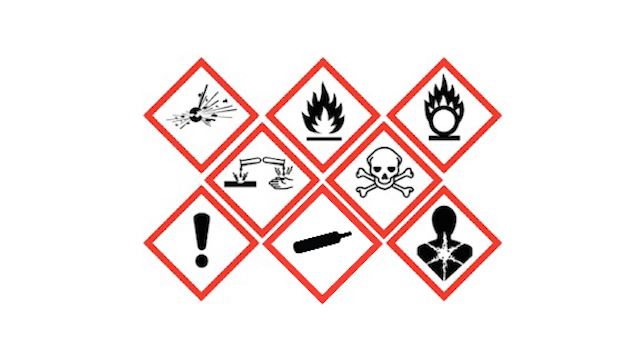Identifying chemical hazards is crucial for maintaining safety in environments where chemicals are used, stored, or disposed of. Chemical hazards can pose significant risks to health and safety, including acute and chronic effects. Understanding and identifying these hazards help prevent accidents, protect workers, and ensure compliance with safety regulations.

Identifying Chemical Hazards
Types of Chemical Hazards
1. Physical Hazards
Physical hazards include chemicals that can cause physical harm due to their properties. These include flammable substances, explosives, and reactive chemicals. Flammable chemicals can ignite and cause fires or explosions if not handled properly. Reactive chemicals can react violently with other substances, leading to dangerous situations. Proper storage and handling procedures are essential to mitigate these risks.
2. Health Hazards
Health hazards refer to chemicals that can cause adverse health effects. These include carcinogens, mutagens, teratogens, and toxic substances. Carcinogens increase the risk of cancer, while mutagens cause genetic mutations. Teratogens can cause birth defects in pregnant women exposed to them. Toxic substances can cause various health issues, ranging from acute poisoning to chronic illnesses. It is vital to use appropriate personal protective equipment (PPE) and follow safety guidelines to minimize exposure.
3. Environmental Hazards
Environmental hazards involve chemicals that can cause harm to the environment. These include pollutants that can contaminate air, water, and soil. Persistent organic pollutants (POPs) and heavy metals are examples of chemicals that can have long-lasting effects on ecosystems. Proper disposal and waste management are crucial to prevent environmental contamination.
4. Chemical Reaction Hazards
Chemical reaction hazards occur when chemicals react with each other in an uncontrolled manner. This can lead to dangerous situations such as fires, explosions, or the release of toxic gases. Understanding the reactivity of chemicals and ensuring proper containment and handling can help mitigate these risks.
Identifying Chemical Hazards in the Workplace
1. Reviewing Safety Data Sheets (SDS)
Safety Data Sheets (SDS) provide critical information about chemical hazards. Each SDS includes details on the chemical’s properties, potential hazards, safe handling procedures, and emergency response measures. Reviewing SDS for each chemical used in the workplace helps identify specific hazards and implement appropriate safety measures.
2. Conducting Risk Assessments
Risk assessments involve evaluating the potential risks associated with chemical use and exposure. This process includes identifying the types of chemicals in use, assessing their hazards, and evaluating the effectiveness of existing control measures. Regular risk assessments help ensure that safety protocols are up-to-date and effective.
3. Implementing Safety Protocols
Implementing and adhering to safety protocols is essential for managing chemical hazards. This includes providing training for employees on safe handling practices, ensuring proper storage conditions, and maintaining appropriate PPE. Regular audits and safety drills can also help reinforce safety measures and address any gaps.
4. Monitoring and Managing Exposure
Monitoring chemical exposure levels and managing them effectively is crucial for health and safety. Using monitoring equipment to measure exposure levels and implementing control measures, such as ventilation systems or containment devices, helps reduce the risk of overexposure. Regular health check-ups for employees exposed to hazardous chemicals can also help detect any adverse effects early.
Conclusion
Identifying chemical hazards is vital for ensuring safety in environments where chemicals are present. Understanding the different types of chemical hazards, including physical, health, environmental, and reaction hazards, helps in implementing effective safety measures. Reviewing Safety Data Sheets, conducting risk assessments, and adhering to safety protocols are key steps in managing chemical hazards. By actively monitoring and managing exposure, organizations can create a safer work environment and prevent accidents and health issues related to chemical hazards


